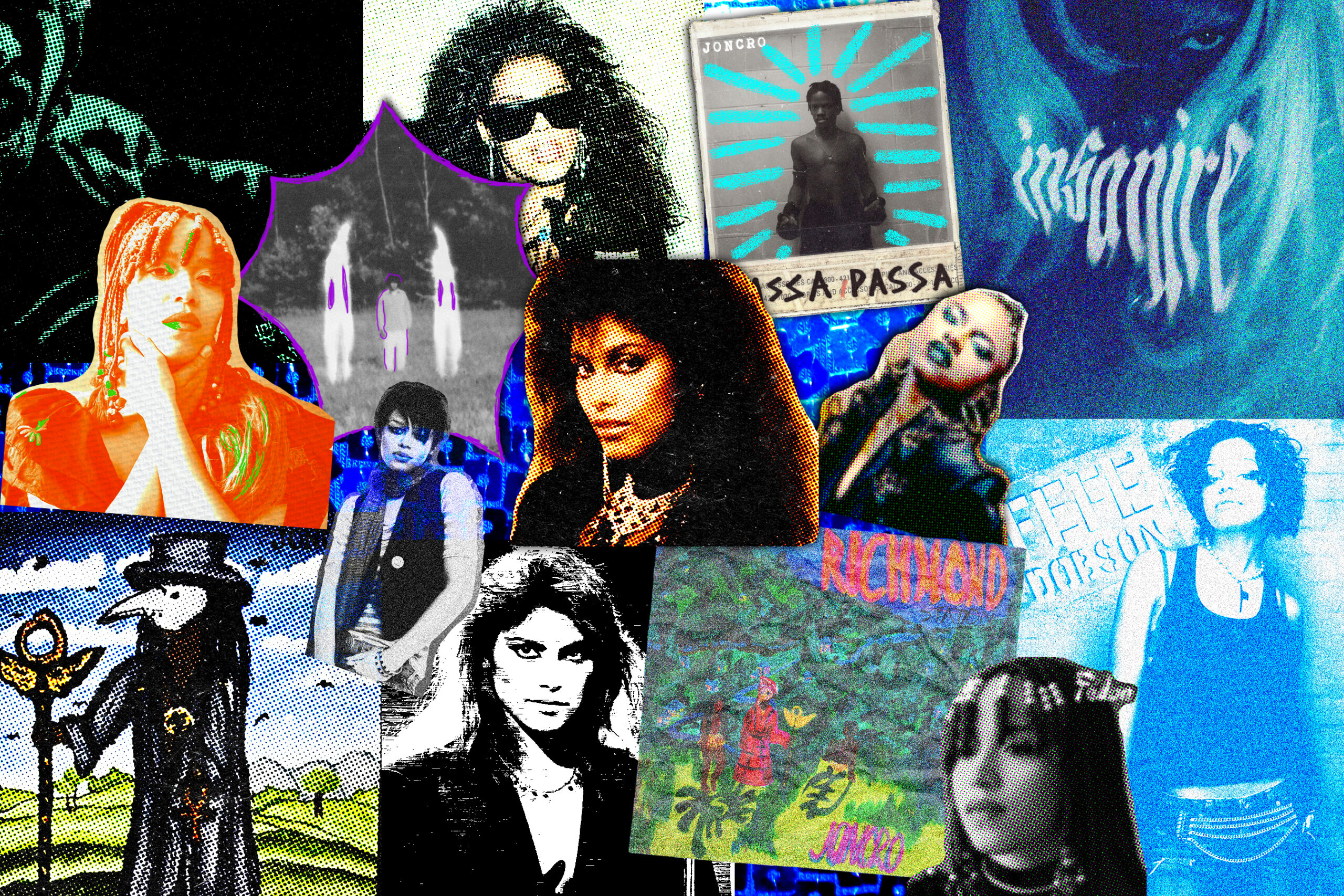Caroline Monnet’s recent exhibition reclaims generations-deep ties between land and language in a“love story” dedicated to Quebec’s Outaouais region and the artist’s ancestors.
By Grace Henkel

In the dimmed lights of the University of Toronto’s Art Museum, several of Caroline Monnet’s sculptures, rendered in polished oak, maple and cherry wood, seem to emit a soft glow.
The undulating shapes in the first section of Monnet’s exhibition Pizandawatc are literally whispers of solidified sound and breaths of language that the French-Anishinaabe artist preserves in a tangible form. To create each piece, words and phrases in Anishinaabemowin were recorded and their sound waves were converted into digital 3D images using architectural software, which were then carved out of wood.

“It’s proven scientifically that the rhythm of languages and tonalities of different languages is based on topography of the land, ” said Monnet.
“I was looking at the Outaouais region, my ancestors’ territory, and just starting to think about how we used to name places back in the days and how much knowledge is actually embedded in naming those places and [in] the land as well.”
She also generated a reverse process, sourcing materials from the land, such as driftwood “that has seen many years and of seasons changing and rain […] that has transformed over time.”
Then, Monnet and a software team converted the wood’s digitized shapes into 2D soundwaves. In this way, unique sounds emanate from each piece; the natural world itself speaks. These are layered together in a stirring immersive audio installation at the beginning of Pizandawatc.
“It’s really the direct link between the language we speak and the landscape we occupy,” said Monnet.
Sculptures Pizandawatc Sagahigan (Lac Celui qui écoute), 2023, Odinimatawak (Blending into one), 2023, Nindanweb apii dagwaaging (When It’s Fall, I Rest), 2021 and Ikwe origami (Portage de la Femme), 2023 are part of a series combining native and industrial wood that “offer a poetic strategy to reclaim the language and its connection to the land,” according to the exhibition description.


These pieces meditate on wood’s availability to Indigenous peoples as a building material before colonization, while bronze sculptures Okikad (Tree Stump) and Okan (Bone) depict the first copper alloy used by the Anishinaabe.
The voices behind each recording-turned-sculpture, according to Monnet, are “language keepers or youngsters that are reclaiming the language right now, relearning their language.”
Pizandawatc, (pronounced pi-ZAHN-dah-watch), is an Anishinaabemowin surname, which translates to “The One Who Listens.” The title honours the artist’s great-grandmother, Mani Pizandawatc, who was the first of Monnet’s ancestors to experience the implementation of the reserve system in Kitigan Zibi, Outaouais region, and the last to bear that surname before the erasure of traditional names was imposed by the Catholic Oblates.
“I was just thinking, you know, there’s a responsibility that comes with that name, and it gives you kind of a direction and you need to be able to listen to the things around you,” said the artist.
“Within four generations, so much has changed.”
Monnet’s compelling process incorporates not only sound, but construction materials to confront the legacy of settler colonialism and its forcible suppression of the Anishinaabe language.


Monnet’s sculpture AKI spells the Anishinaabemowin word for “land” with fiberglass insulation encased in a plexiglass shell. This piece, and others by Monnet like KIWE, or “to go back where it started,” meditate on the disposability of contemporary building materials and the ongoing housing crisis. The words call back to histories of Indigenous land stewardship, in stark contrast to artificial structures evocative of impermanence and waste.
Though jokingly claiming to love the insulation because “it looks like cotton candy,” the substance holds a darker side for the artist. Monnet employs the fluffy, soft pink matter to convey a disconnect between the housing industry and the natural world from which it extracts its resources.
“It’s just such a nasty material that speaks about the lack of vision from the industry or the Canadian government from trying to build houses that will last for more than 50 years. That can be planned for the next seven generations, for example.”


Monnet also utilizes waterproof tarps and air barrier membranes, embroidering the fabric in several artworks that contemplate notions of shelter and habitat in the wake of cultural loss. Many of these pieces express a resolve to restore what has been erased by colonialism, merging themes of revitalization and resistance in shimmering, richly-coloured threads. One particularly striking embroidered piece, stitched in silver and steel blue, reads, “Wolves Don’t Play by The Rules.”
The fabric sculptures of Monnet’s Wound series are composed of Kevlar, an aramid fibre used in bulletproof vests and aerospace engineering practices. The shimmering, overlapping forms, their edges delicately traced by tiny beads, express “a record of the body or a rugged terrain,” according to the exhibition description. The series conveys a dialectical bond between the painful legacy of trauma, the resilience of the land and body, and the healing process that follows.
“I hope people have an emotional reaction to the works, that they feel connected to them. And just to realize that the land we occupy, everything around us, has a big influence on who we are,” said Monnet.
“In return, we have a lot of influence on our surroundings. And [we must] be careful about that really fragile relationship.”





